#Xiaomi Mi 10 Lite 5g smartphone specs
Explore tagged Tumblr posts
Text
Xiaomi Mi 10 Lite Review - 5G Smartphone with Snapdragon 765G (8G+256GB) For Just $479.99 at Geekbuying (Coupon)
Xiaomi Mi 10 Lite Review – 5G Smartphone with Snapdragon 765G (8G+256GB) For Just $479.99 at Geekbuying (Coupon)
Xiaomi recently introduced the Mi 10 and Mi 10 Pro in the global version and, to our surprise, also had another mid-range smartphone with them. The latest member of the Mi 10 series is the Mi 10 Lite 5G Smartphone. The Xiaomi Mi 10 Lite packs an AMOLED screen with 2400 x 1080p with HDR10+ support and is powered by a Snapdragon 765G 5G octa-core chipset.


Buy Mi 10 Lite 5G Smartphone at Geekbuying
D…
View On WordPress
#mi 10 lite price#Mi Note 10 Lite#Mi Note 10 Lite deal#mi note lite#mi note lite 1#xiaomi#Xiaomi Mi 10 Lite 5g smartphone#Xiaomi Mi 10 Lite 5g smartphone best deal#Xiaomi Mi 10 Lite 5g smartphone coupon#Xiaomi Mi 10 Lite 5g smartphone discount#Xiaomi Mi 10 Lite 5g smartphone features#Xiaomi Mi 10 Lite 5g smartphone hands on#Xiaomi Mi 10 Lite 5g smartphone review#Xiaomi Mi 10 Lite 5g smartphone specs#Xiaomi Mi 10 Lite 5g smartphonw#Xiaomi Mi CC10#Xiaomi Mi Note 10#Xiaomi Mi Note 10 Lite#xiaomi mi note 10 lite 5g#xiaomi mi note 10 lite antutu#Xiaomi MI Note 10 Lite banggood#Xiaomi MI Note 10 Lite best offer#Xiaomi MI Note 10 Lite best price#Xiaomi Mi Note 10 Lite Best Sale#Xiaomi Mi Note 10 Lite buy#Xiaomi MI Note 10 Lite buy now#xiaomi mi note 10 lite caracteristicas#xiaomi mi note 10 lite cena#Xiaomi MI Note 10 Lite coupon#Xiaomi MI Note 10 Lite deal
0 notes
Text
Will Your Next Smartphone be a Xiaomi? S20 FE 5G vs Mi 10T!
I must start off by saying WOW. Just a few short years ago, I wouldn't have dared to compare a pretty high end Samsung device to any Xiaomi phone. Here we are though, it's 2021, Huawei is pretty much out of the picture given that their phones don't have access to the Google services, Samsung makes great phones, but are usually quite pricey and Xiaomi isn't focused on making only cheap, budget smartphones anymore. Although not available worldwide, the Mi 10 Ultra, which takes every spec and brings it to the max is Xiaomi's way of giving us a sneak peak into what the future holds when it comes to their high end phones.
We are going to divide this comparison into 6 categories: Design, Screen, UI, Performance, Camera and finally, which one deserves your hard earned cash the most? If you're only interested in a specific, feel free to jump to that section through the video progress bar.
Ok, so first of all, the design and quality of the phones. This one is pretty easy, with Samsung you can feel that some corners were cut in order to bring the price down, we have seen this happening with most flagship killers. The back is made out a hybrid material, something that Samsung calls glasstic, but really, it feels like matte plastic. On the Mi 10T, we have Gorilla glass 5 not just on the front, but also on the back with this mirror-like effect. Also, the color of the back shifts from dark grey to almost silver, depending on the light. The frame is made out of aluminium on both, which is to be expected, but overall, the design of the S20 FE is just uninspiring. From the plain camera bump, to the larger bezels, I just don't think the S20 FE takes the crown when it comes to design. The bezels on this phone are slightly larger than on the predecessor, the Galaxy S10 Lite, so I can't say I'm pleased with this. Although the bezels aren't really slim on the Mi 10T either, when holding the phone, you can feel that the materials are of much higher quality, mostly because of the back. The camera bump is more pronounced but at least more interesting than just throwing 3 cameras in column and making the bump much wider than necessary. I must mention, this is not a 4 camera system, as the holes would lead you to believe, one of them is there just for the sake of symmetry. I will say though, the Mi 10T is quite a bit heavier than the S20 FE, a bit larger, mostly because of the larger screen and about a milimeter thicker, so if you appreciate thin & light, the Mi 10T might not be for you. If these things don't bother you, the Mi 10T is an absolute winner, being much closer to flagship territory than the S20FE, when it comes to the design.
Things are going to get a lot more interesting now, let's talk about the screens. On paper, the screen of the Mi 10T might look like the winner. After all, it's larger, coming in at 6.67 inches instead of 6.5 inches and it has an impressive 144Hz refresh rate, rather than 120Hz. There's a catch though, the screen on the Mi 10T is an IPS LCD panel, unlike the Samsung which has an AMOLED screen. This right here is a significant difference and the sole reason why the screen on the Mi 10T is not as good as it could be. Blacks are not as deep as on the AMOLED, because of the backlighting, the refresh rate isn't as impressive as it sounds on paper, because of the high response time, which looks like ghosting if you pay attention. I'm not sure it would've fit the budget, but I can honestly say a 90Hz AMOLED screen would've been the better choice, instead of going all out on the refresh rate but not feeling this benefit because of the LCD panel. Because of the LCD panel, it also means that you are missing out on Always on functionality, but this is the smallest of drawbacks, if you ask me. On the other side, with the Samsung, it's the usual AMOLED with really saturated colors. If you switch colors from vivid to to normal, the colors become too washed out, much more than I'm used to on my iPhone. What I ended up doing is using vivid mode with the blue light filter activated. I'm sure color accuracy suffers because of this, but at least the screen looks closer to what I'm used to.
Next up, we'll discuss the UIs, because it's an important category. This does come down to personal preference though, so what I'll do is tell you what each one can do and any drawbacks that they may have. Let's start off with Samsung, this S20 FE 5G rocks One UI 3 on top of Android 11 and to be honest, Samsung has got their stuff together when it comes to UIs. I get updates quite frequently and will continue to get Android updates until Android 13, Samsung has their own identity now, I like their browser better than Chrome. Also something great that Samsung did for one-handed use is using these large headers at the top, which disappears when scrolling, but mean that you can easily access the buttons when opening the app. Samsung's dedicated one-handed mode is elegant and can be adjusted so the screen shrinks to exactly the size you need. As far as bugs and glitches go, I can happily say that I haven't experienced none and the interface is smooth. On the Mi 10T we have MIUI 12 running on top of Android 10, so we're starting off already with an older version of Android, but this should be updated to Android 11 at some point, hopefully... MIUI feels a bit snappier and it has a lot of great looking notifications, maybe a bit overdone, but it cheers me up seeing stuff happening instead of the boring notifications we all got used to. I like the fact that I can get to the quick settings panel through a single swipe on the right side of the screen instead of two swipes on Samsung. The video toolbox is extremely useful as it lets you listen podcasts on Android with the screen closed. It's not all rosy though, the phone app is for example the stock android one and the UI elements just don't seem MIUI-like, the background of the app is blueish, whereas all the other apps are black because I have dark mode on. Sometimes, an app I use frequently, cellmapper is stuck open and the only way to close it is by force-closing. I am happy to report, though that there are no ads here. In the end, it comes down to personal preference, if you like your phone to be more animated, you'll like MIUI, if you want a more sober experience, go with One UI.
Performance wise, not much to say, both are at the flagship level, given the Snapdragon 865 equipped by both. 6GB of RAM on both, as these are the base models, MIUI seems to be a bit more aggressive with RAM management but this can be tweaked on a per-app basis, so your most used apps aren't going to get closed. I'm impressed that I don't feel the change in the refresh rate on the Xiaomi, as it is adaptive, it's smooth all throughout. One thing I like about the Xiaomi is the side mounted fingerprint reader, it's blazing fast, much faster than any phone I've used so far. With the on screen fingerprint sensor on the S20 FE, I almost always struggle to get it to unlock, it's harder to keep your finger stationary on glass and it seems to have a hard time reading my finger. Overall, I'll give this to the Mi 10T, the fingerprint scanner tips the scale in its direction for sure.
Cameras are a category where sometimes you can really feel that corners were cut. In this case, the Mi 10T doesn't have a telephoto camera, Xiaomi choosing to offer a 5MP macro lens, which although miles better than the 2 MP, it still doesn't come anywhere close to the telephoto when it comes to usefulness. The main camera is a 64MP shooter on the Mi 10T, using pixel binning to get 16MP photos, whereas on the Samsung we have a 12MP sensor. Overall, both take good shots, with the Xiaomi having more details, but losing out on dynamic range and in low light conditions, which is why I'll give this one to Samsung. The Mi 10T shoots 8k video, but that's a gimmick, as there is no video stabilisation at 8k, so you'll most likely end up shooting 4k to get usable video.
So, now the final question. Which one should you get? Well, here's the deal, both of these smartphones are great, but for the price difference, $699 vs about $499, it's hard to justify the price of the Samsung. Yes, the camera is better on the Samsung, but on the other hand, the design on the Mi 10T is higher quality than on the Samsung. I can only recommend the S20 FE if you want an all-around better camera system, partly due to the telephoto, partly due to better dynamic range and low light capabilities or if you absolutely can't live without OLED, though I'd recommend checking it out in real life before making the call. If the camera's not your main focus, spare the money and get the better looking, higher quality built Mi 10T.
Mi 10T (US): https://amzn.to/3bpXrlq
Mi 10T (UK): https://amzn.to/2NXvfi4
S20 FE 5G (US): https://amzn.to/3pKokpC
S20 FE 5G (UK): https://amzn.to/2ZKs67C
#tech#xiaomi#samsung#mi 10t 5g#s20 fe#s20fe#flagship#smartphone#Xiaomi vs Samsung#Mi 10T#Xiaomi Mi 10T#tech review#smartphone review
1 note
·
View note
Text
Best Redmi Mobiles for Sale in India
Xiaomi has been at the forefront of smartphone technology in India for quite a while. Its Mi and Redmi mobile phones have made a significant impact on the market with their great value-for-money offerings. These devices come with a variety of features and offer exceptional performance for their price ranges. Whether you want a top-performing 5G smartphone, an amazing camera phone, or just a basic model to get you started, Xiaomi has something for everyone. Here’s our list of the best Redmi mobiles for sale.
Xiaomi’s top-of-the-line flagship phones have always been a good value for money. This year, they’ve added the Redmi Note 12, which is a powerful phone that offers great specifications for its price. It also has a Pro variant, which is even better in terms of specs and camera capabilities.
The Redmi 10 is another high-performance device that offers excellent value for its price. It has a 6.5-inch full HD display and a dual-camera setup at the back. Moreover, the processor and RAM are more than capable of handling everyday tasks with ease. Moreover, the phone has a large 5000 mAh battery that can keep you going for long hours.
Similarly, the Redmi 9 Power is a great option for those who want to have an affordable yet high-performance smartphone. Its 48MP quad camera can take stunning pictures regardless of the lighting conditions. The handset is also equipped with a 6.43-inch AMOLED display with a 90Hz refresh rate for immersive viewing experiences.
If you’re looking for a budget-friendly smartphone with high-end features, the Xiaomi 12 Lite is one of the best choices available in India. It has a great-looking design with flat edges and a matte finish on the back. The camera is more than adequate for everyday use, and it has enough power to handle the latest games.
The Xiaomi 2022 is the latest flagship phone from the Chinese manufacturer. It has a high screen-to-body ratio and a massive 5000mAh battery. The device can run the most demanding apps and games, and its powerful processor is 20% faster than its predecessor. In addition, it comes with a 64MP front camera for excellent selfies. It also has a widescreen 18:9 aspect ratio for an immersive viewing experience. Buy here : Bhatia Mobiles
0 notes
Photo

Xiaomi Mi 10 Lite 5G vs OnePlus Nord N10 5G vs Moto G 5G: Specs Comparison Check Full Details 👇 https://tinyurl.com/yas23j7j #yesmobile #latesttechnology #smartphone #latestmobile
0 notes
Link
0 notes
Text
Xiaomi Mi 10T and Mi 10T Pro full specs and new renders leak, Mi 10T Lite still expected, and rumored prices for the whole Mi 10T series
Just ahead of launch, the specifications sheets for the Xiaomi Mi 10T and Mi 10T Pro have been seemingly leaked courtesy of tech tipster Sudhanshu Ambhore. It was widely expected the latest Mi 10 smartphones would come with the Snapdragon 865 SoC and a 144 Hz panel, but there is at least one surprise to be found in the datasheets. According to this particular leak, the Mi 10T actually gets 8 GB RAM, when it was widely expected to only get 6 GB. While this is the only version of the regular model mentioned, the Pro variant of the upcoming 5G smartphone will apparently come in two configurations: 8 GB + 128 GB and 8 GB + 256 GB.
The only other differences listed between the Xiaomi Mi 10T and Mi 10T Pro are the main camera sensor (64 MP vs. 108 MP with OIS) and the choice of colors: The Mi 10T comes in silver or black while the Xiaomi Mi 10T Pro can be clad in black, silver, or blue. The tipster has assured followers that the details are accurate, and while someone has mentioned that the dimensions and weight are slightly incorrect, with the Pro model being a bit bigger and heavier, it appears that the two Mi 10T devices are almost identical.
The potential Xiaomi Mi 10T Lite 5G smartphone has kept a much lower profile than the other two Mi 10 devices, but it is also rumored to be coming with a 6.67-inch display. The refresh rate is allegedly lower, at 120 Hz, and a Snapdragon 750G chip has been mentioned. With 6 GB RAM and 64 GB/128 GB storage, 64 MP main camera sensor, and 4,720-mAh battery, the mysterious Mi 10T Lite is nothing to be sniffed at, especially when it is expected to come with a price tag that is under €300 (US$349). Like the Mi 10T and Mi 10T Pro, the Lite variant should have a side-mounted fingerprint reader.
Unsurprisingly, the Xiaomi Mi 10T and Mi 10T Pro will be pricier than their possible Lite relative, but maybe by not as much as some believe. Various price predictions have been bandied around, with about €550 (US$641) suggested for the Mi 10T and €640-€699 (US$745-US$814) for the Pro model. However, other sources have gone with €499 (US$581) and €599 (US$698), respectively, which also falls in line with rumors we have already reported on. These latter price points would be much more welcome for the upcoming Xiaomi smartphones, with the Mi 10T Pro's price possibly being even lower considering its similarity to the regular model.
0 notes
Photo

Xiaomi launched the Mi 10 Lite 5G in Europe last month and today the company announced it will unveil a new variant of the smartphone on April 27 in China, dubbed Mi 10 Youth (machine translated from Chinese). Alongside the Mi 10 Youth, Xiaomi will also detail MIUI 12. The unveiling will be streamed live starting at 6 AM UTC. We don't have the full specs of the Mi 10 Youth yet, but a poster shared by Xiaomi on Weibo confirmed the Mi 10 Youth will come in four colors and pack a quad camera setup on the back including a periscope module with 50x zoom. The Mi 10 Youth, like its global counterpart Mi 10 Lite, will support 5G networks and may have a Snapdragon 765G SoC at the helm. Details about the MIUI 12 are scarce right now, but we expect to hear more about it in the days leading to the official announcement. . . . . #techies_page_xiaomi #techies_page_miui #techies_page #techies #tech #technology #xiaomi #mi #redmi #chinese #china #5g #mi10lite #mi10lite5g #europe #mi10youthedition #mi10youth #usa #unitedstates #unitedkingdom #miui12 #miui #quadcamera #periscope #50xzoom #weibo #snapdragon765g #launch #unveil #australia https://www.instagram.com/p/B_PDO4ugkiJ/?igshid=m2snuyad6l82
#techies_page_xiaomi#techies_page_miui#techies_page#techies#tech#technology#xiaomi#mi#redmi#chinese#china#5g#mi10lite#mi10lite5g#europe#mi10youthedition#mi10youth#usa#unitedstates#unitedkingdom#miui12#miui#quadcamera#periscope#50xzoom#weibo#snapdragon765g#launch#unveil#australia
0 notes
Text
Xiaomi to Launch MIUI 12, Mi 10 Lite China Variant on April 27
medianet_width = "300"; medianet_height = "250"; medianet_crid = "173377332"; medianet_versionId = "3111299";
Mi 10 Lite 5G is about to launch in China on April 27 — alongside MIUI 12. Xiaomi final month unveiled the Mi 10 Lite 5G in Europe. Nonetheless, its China model is probably going to debut with a definite set of specs. A teaser posted by Xiaomi on Weibo has already advised the presence of a periscope setup on the China variant of the Mi 10 Lite 5G. The cellphone would even be known as the Mi 10 Youth Version in China — comparable to its predecessors. Alongside the brand new Mi 10 mannequin, Xiaomi at its April 27 occasion is launching MIUI 12, the next-generation customized interface by the corporate. You possibly can safely count on a variety of further options on MIUI 12 over what you could have on MIUI 11.
The teaser posted on Weibo shows that the Mi 10 Lite 5G aka Mi 10 Youth Version launch in China will happen at 2pm CST Asia (11:30am IST) on April 27. The picture additionally offers a glimpse of the digital camera setup of the brand new smartphone that means some variations over what was launched in Europe final month. There’s apparently a periscope digital camera, as well as to three different shooters. Moreover, the picture reveals that the periscope setup will allow to the digital camera to assist 50x zoom, which is according to the common Mi 10. It’s also possible to count on some synthetic intelligence (AI) based mostly digital camera enhancements.
Mi 10 Lite 5G teaser suggests a periscope digital camera Picture Credit score: Weibo
Xiaomi launched the Mi 10 Lite 5G in Europe at EUR 349 (roughly Rs. 29,000). Nonetheless, particulars about its China value are but to be introduced. The smartphone can be seemingly to debut in markets together with India someday later this yr.
In accordance to a report by expertise weblog Pricebaba, courtesy tipster Ishan Agarwal, the Mi 10 Lite 5G would debut in 4 distinct variants, particularly 6GB + 64GB, 6GB + 128GB, 8GB + 128GB, and 8GB + 256GB. The cellphone in China can be mentioned to embrace totally different color choices over the three colors launched in Europe and are available in Black, White Peach, Blueberry Mint, Milk Inexperienced, and Peach Grapefruit.
As well as to the Mi 10 Lite, Xiaomi is about to launch MIUI 12 as the brand new model of its working system. A teaser launched on Weibo suggests that the brand new MIUI model will include an enhanced gesture controls. You’ll additionally get numerous customisations.

MIUI 12 teaser suggests gesture controls Picture Credit score: Weibo
An earlier teaser advised that MIUI 12 would include new system fonts and retain the minimalistic design of MIUI 11. There would even be totally different color schemes. Additional, some screenshots displaying the alleged MIUI 12 Settings app advised the cellphone would come with a revamped “Refresh Price Settings” underneath the Show tab.
Xiaomi is speculated to begin rolling out MIUI 12 from September whereas its beta model would debut on some telephones in October. The corporate is probably going to reveal its preliminary roadmap through the official launch.
medianet_width = "300"; medianet_height = "250"; medianet_crid = "173377332"; medianet_versionId = "3111299"; Source link
The post Xiaomi to Launch MIUI 12, Mi 10 Lite China Variant on April 27 appeared first on Bharats Guide.
from WordPress https://ift.tt/2wTRtJq via IFTTT
0 notes
Text
Xiaomi phones Review
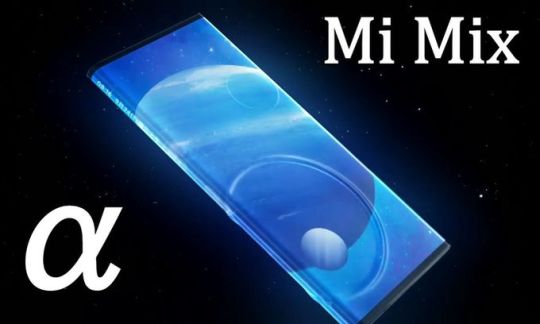
Today, more than 600 companies produce smartphones. However, almost 80% of the world market belongs to ten major manufacturers, including South Korean Samsung (19%) and LG (3%), American Apple (12%), Finnish Nokia (1%) and Chinese Huawei (13%, including Honor), Xiaomi (9%), Oppo (9%), Vivo (8%), Lenovo (3%, including Motorola), Tecno (1%). As known, the Chinese Xiaomi Corporation was founded in 2010. During this time, the company has developed and released a huge number of models in almost all price segments. Some series, for example, Xiaomi Mi Note, were discontinued, having existed for several years. But others were more successful.
Xiaomi series line
1.Xiaomi Mi - the main, flagship line; 6-inch or more IPS, or AMOLED displays, 8-core Snapdragon 660, 845, 710, 712, 730, 855 and 855+. 2018 - Mi 6X, Mi 8, Mi 8 Lite, Mi 8 EE and Mi 8 SE; 2019 - Mi 9T, Mi 9 SE, Mi 9 and Mi 9 Pro 5G. 2.Xiaomi Mi Max - phablets; 6.9 - inch IPS, 8-core Snapdragon 636. 2018 - Mi Max 3. 3.Xiaomi Mi Mix - frameless design; 5.99 "IPS and 6.39" Super AMOLED, 8-core Snapdragon 845. 2018 - Mix 2S and Mix 3; 4.Xiaomi Mi A - without MIUI firmware, with Android One distribution and a minimum of pre-installed programs (only Google services). Up to 6 inches IPS or 6-inch AMOLED, 8-core Snapdragon 660, 625 and 665. 2018 - Mi A2 and Mi A2 Lite; 2019 - Mi A3. 5.Redmi is a budget segment; IPS up to 6 inches, 8-core Snapdragon 625, 8-core MediaTek Helio P22 or 4-core MediaTek Helio A22. 2018 - Redmi 5, 5 Plus, S2, 6, 6A, 6 Pro. 6.Redmi Note - Phablets; IPS from 6 inches, 8-core Snapdragon 636. 2018 - Redmi Note 5 and 6 Pro. 7.Redmi sub-brand - since 2019, the budget segment; IPS or AMOLED from 6.2 inches and above, 4-core Snapdragon 425 or 8-core Snapdragon 632, 660, 675, 730, 439. 2019 - Redmi GO, Redmi 7, Redmi Note 7, Redmi Note 7 Pro, Redmi K20, Redmi 8. 8.Black Shark - game series (liquid cooling system, screen with a refresh rate of 120 Hz, enhanced performance mode); 6-inch IPS, 6 or 6.4-inch AMOLED, 8-core Snapdragon 845 or 855. 2018 - Black Shark and Black Shark Helo; 2019 - Black Shark 2.
MIUI (MI User Interface)
Of course, the OS is one of the main components of a modern phone, providing most of its smart functionality. As known, since 2010 Xiaomi Inc has been developing open-source MIUI (MI User Interface) based on the Android OS. This OS does not use the app menu. The first versions were developed using a startup based on Android 2.2.x Froyo and only supported the Chinese language. After entering the international market, Xiaomi divided MIUI into local Chinese and international. The local version uses English and Chinese languages, and Chinese counterparts instead of Google services. The international version supports Google services and more than 40 languages. For nine years, the company has released 11 versions. The penultimate, MIUI 10 (10.4.5.0 latest stable release) version was released on May 31, 2018. On September 24, 2019, the company introduced the latest MIUI 11 (11.3.4.0 release) for Android 7.0 and up, including Android 10.
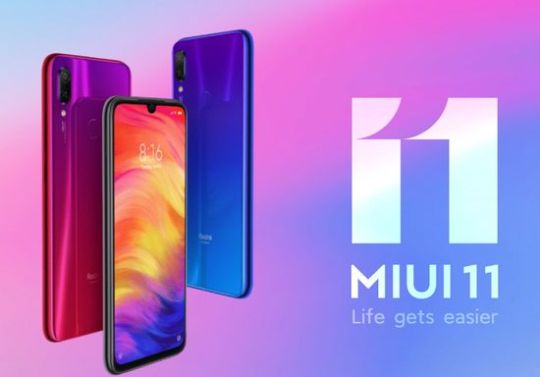
MIUI 11
The list of major changes: - DC dimming. Probably, DC dimming has become one of the main improvements of the new version. As known, adjusting the brightness of OLED matrices uses PWM (Pulse Width Modulation). Unfortunately, PWM causes the screen flicker when brightness decreases, which causes eye strain. In fact, this is one of the main disadvantages of modern AMOLED screens. Of course, the solution to this problem is a serious achievement. To reduce brightness, the algorithm reduces the voltage applied to the pixels, instead of frequency; - interface - dark theme schedule, displaying the % battery charge, selecting MIUI or Android notifications, font size settings, a button for switching between camera modules, etc; - a significant expansion of the assortment of sounds and their sets for notifications, mainly on the theme of nature (meowing, etc); - Always On Display with dynamic animation; - similar to Apple's AirPlay, MIUI 11 offers Cast from Xiaomi (support for transferring content to the screens of most modern Smart TVs without additional software or equipment); - similar to Apple's AirDrop, data transfer to some other smartphones (Xiaomi, OPPO, Realme and Vivo).
Xiaomi Mi 9T and Xiaomi Mi 9 SE
The Xiaomi Mi 9T with a retractable front selfie camera offers a minimal flagship set.
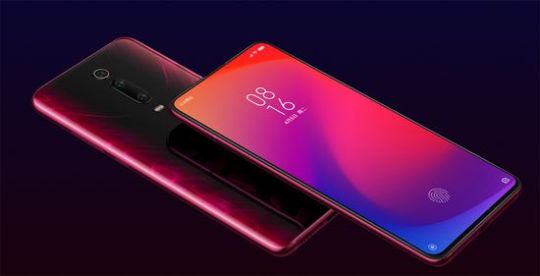
The model uses a 6.39-inch AMOLED display with 2340 x 1080 resolution (403 ppi), an 8-core Qualcomm Snapdragon 730 chipset (2 ARM Cortex-A76 with a frequency of up to 2.2 GHz and 6 ARM Cortex-A55 with a frequency of up to 1.8 GHz), RAM 6GB and 64/128GB. In addition, the model may well claim the status of a camera phone using a three-module camera (48 MP, 8 MP and 13 MP sensors) with f/1.75, f/2.40, f/2.40 aperture, LED flash, autofocus, macro mode and optical Zoom 2x. As usual, the front camera uses a 20 megapixel sensor. In addition, a 4000 mAh battery provides a good battery life. PROS - good hardware platform; - great main camera; - retractable front camera; - high battery life. Cons - does not support 4K @ 60 video recording; - the average level of the unlock system. Xiaomi Mi 9 SE is a compact version with a 5.97-inch Super AMOLED with 2340 x 1080 resolution (432 ppi).

MI 9 SE uses Snapdragon 712 (2 Kryo 360 clusters, including 2 Cortex-A75 with a frequency of 2.3 GHz and 6 Coretx-A55 with a frequency of up to 1.8 GHz), RAM 6GB and 64 / 128GB, NFC and fast charging. The model also has a three-module camera (8MP Sony IMX586 Exmor RS + 8MP + 13MP) and a 20-megapixel front camera.
Xiaomi Mi 9
Xiaomi Mi 9 is a more performance phone. Like the Mi 9T, the model uses a 6.39-inch AMOLED display with 2340 x 1080 resolution (403 ppi), RAM 6GB and 128GB.
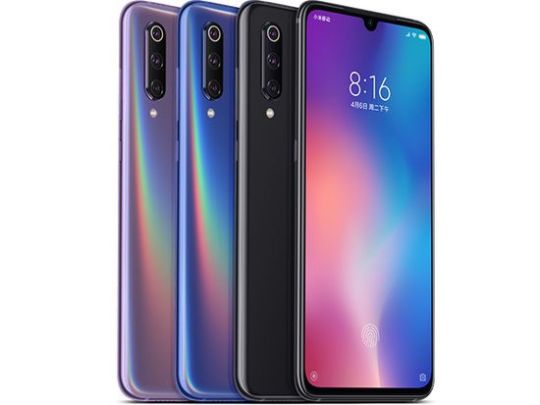
But the company equipped it with the more powerful Qualcomm Snapdragon 855 (8 Kryo 485, including Coretx-A76 up to 2.84 GHz + 512 KB cache, 3 Coretx-A76 (256 KB cache) up to 2.42 GHz and 4 Coretx-A55 up to 1.8 GHz).
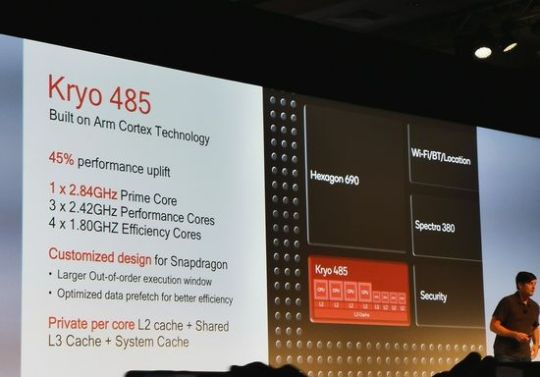
As known, the first smartphones with Snapdragon 855, including Xiaomi Mi9, Samsung Galaxy S10, LG G8 and V50 were presented at MWC (Mobile World Congress) 2019. In addition, Mi 9 uses an exellent three-module (48 MP + 16 MP + 12 MP) camera with f/1.75, f/2.20 and f/2.20 aperture and a 20-megapixel front camera. PROS - great hardware platform; - excellent shooting quality; - Qualcomm Quick Charge and wireless charging. Cons - high price; - no optical stabilization; - there is no protection against moisture.
Xiaomi Mi 9 Pro 5G
But in September, the company already introduced the Xiaomi Mi 9 Pro 5G.
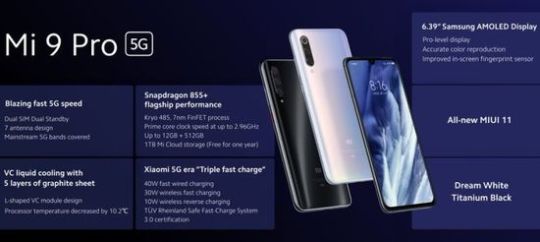
This smartphone has the latest Snapdragon 855+ (2019) with a fast Prime Core that clocks up to 2.96 GHz (up from 2.84 GHz in the 855), three fast ARM Cortex-A76 performance cores, which can reach up to 2.42 GHz and four power-saving ARM Cortex-A55 cores that clock up to a maximum of 1.8 GHz. In AnTuTu, the result of Xiaomi Mi 9 Pro 5G reaches 480,830 points. Its price is $ 520 for model with RAM 8GB and 128GB, $ 534 - 8/256GB, $ 577 - 12/256GB and $ 605 - 12/512GB. The capacity of battery increased from 3300 to 4000 mAh. The model supports triple fast charging. Charging time for wired charging is 48 minutes; wireless charging provides 2000 mAh in 25 minutes. The smartphone also supports wireless reverse charging for other mobile devices.

But other components have not changed much. The Mi 9 Pro 5G uses a 6.39-inch Samsung Super AMOLED Full HD+ display with a maximum brightness of 600 nits, and a fingerprint sensor is integrated under the screen. The three-module camera has a 48 megapixel sensor (wide-angle lens with a viewing angle of 79° and an aperture of f/1.75), a 16 megapixel sensor (ultra wide-angle lens with an aperture of f/2.2 and a viewing angle of 117°) and 12 megapixel sensor with f/2, 2. Additionally, the model has a front-facing 20-megapixel camera with f/2.0.
Xiaomi Black Shark 2
In addition, in 2019, the company introduced the second generation of the gaming Black Shark smartphone.
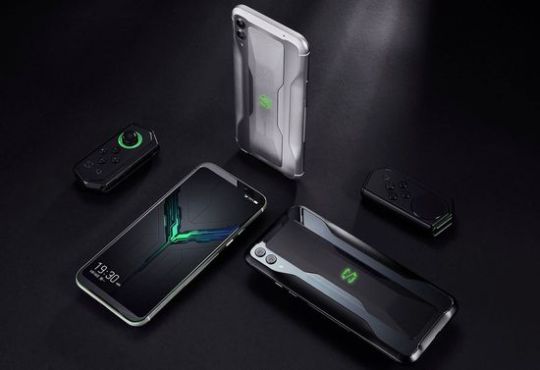
Xiaomi engineers managed to significantly improve the previous version. Firstly, Black Shark 2 uses an AMOLED matrix with an unprecedentedly low switching time for brightness levels and response of the sensor layer. Unfortunately, it does not support DC Dimming technology that eliminates screen flicker due to low frequency PWM. Secondly, the model uses an advanced liquid cooling system with a copper radiator and several layers of graphite film.
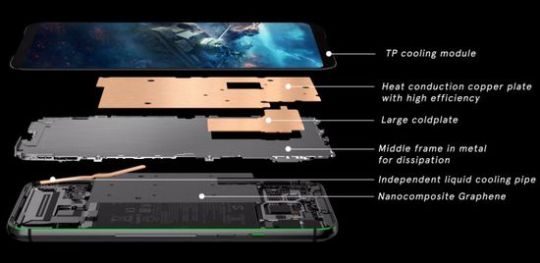
Unfortunately, it still heats up under prolonged high loads, but much less compared to Black Shark. The model uses an 8-core Qualcomm Snapdragon 855. In addition, the smartphone has a 6.39-inch AMOLED display with 2340 x 1080 resolution (403 ppi), RAM 6GB, 128GB, a dual-module camera (48 MP + 12 MP) with f/1.75 and f/2.20 aperture and 20-megapixel front camera. Additionally, a 4000 mAh battery provides a good battery life. PROS - Snapdragon 855; - very fast AMOLED matrix; - gamer interface; - Parental Control; - optional gamepad. Cons - no DC Dimming technology; - does not support memory cards; - no NFC (Near Field Communication) module. As known, the NFC module provides wireless data transmission at a short distance of up to 10 cm using a radio signal. The module practically does not consume energy and provides almost instant communication. Unfortunately, this protocol supports a rather low speed and limited amount of data. However, its popularity is growing rapidly.
Xiaomi Mi MIX Alpha
Of course, Xiaomi Mi Mix Alpha has become the most innovative phone in 2019. The area of its wrap-around screen reaches 180.6% of the body area. In fact, this unusual display is wrapped around the case.
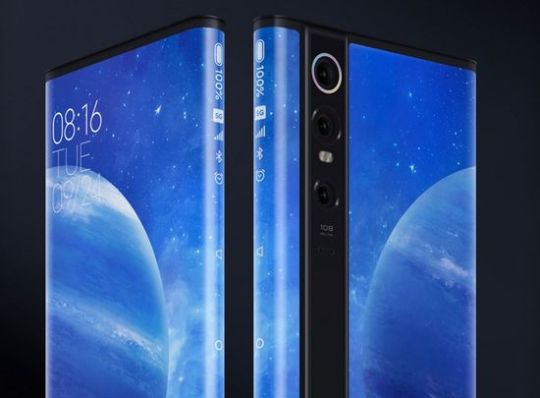
Its side faces are used to place touch buttons. Of course, the camera with a 108-megapixel sensor (1/1.33-inch) was the second sensation of the model.
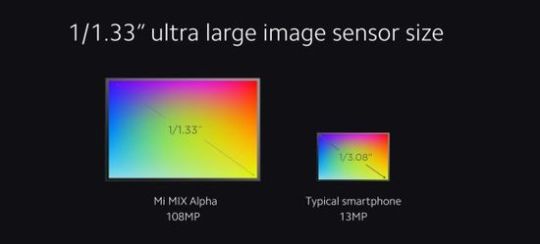
The camera also has an integrated optical image stabilization system. Lightweight and durable titanium alloy case provides a stylish design.
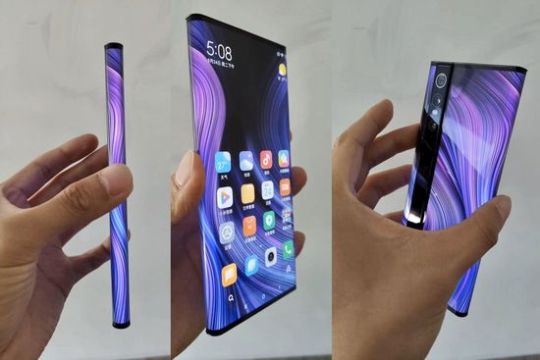
The rest of the specs also correspond to the highest level, including 5G, Snapdragon 855 Plus, RAM 12GB, 512GB, sound transmission technology via vibration of the screen surface, 4050 mAh battery, fast charge, etc. Unfortunately, the preliminary price of the model reaches around $ 3,000.
Conclusion
More recently, consumer electronics from Chinese brands was mainly positioned in the budget or mid-budget segments due to the relatively low quality and innovative level. But in the past few years, the situation has changed radically. Chinese smartphones, TVs, projectors, robotic vacuum cleaners are increasingly successfully competing with the flagships of traditional leaders. For example, many experts call Xiaomi Mi 9 Pro 5G one of the best models of 2019. In addition, Xiaomi Black Shark 2 successfully competes in the gaming segment. Moreover, Xiaomi Mi Mix Alpha rightfully claims to be the main innovative sensation of 2019. On the other hand, the price of Chinese brands also no longer refers to the budget segment. Of course, Samsung, LG, and other traditional leaders are still leading in terms of reliability and service. But Xiaomi can press them on the innovative Olympus. Of course, this factor will significantly affect the choice of the optimal smartphone among high-tech fans. This video shows a new Xiaomi Mi Mix Alpha phone with a unprecedented screen to body ratio (180,6%) and with a 108-megapixel sensor (1/1.33-inch). Read the full article
#DCdimmingtechnology#MIUserInterface#MIUI11#Snapdragon855Plus#XiaomiBlackShark2#XiaomiMi9#XiaomiMi9Pro5G#XiaomiMi9SE#XiaomiMi9T#XiaomiMiMixAlpha#Xiaomiphones
0 notes
Text
Xiaomi will unveil MIUI 12 and Mi 10 Youth with 50x zoom on April 27
Xiaomi launched the Mi 10 Lite 5G in Europe last month and today the company announced it will unveil a new variant of the smartphone on April 27 in China, dubbed Mi 10 Youth (machine translated from Chinese). Alongside the Mi 10 Youth, Xiaomi will also detail MIUI 12. The unveiling will be streamed live starting at 2 PM local time (6 AM UTC). We don't have the full specs of the Mi 10 Youth yet, but a poster shared by Xiaomi on Weibo confirmed the Mi 10 Youth will come in four colors and pack a quad camera setup on the back including a periscope module with 50x zoom. The Mi...
source https://www.gsmarena.com/xiaomi_mi_10_youth_edition_miui_12_launch_date-news-42769.php
0 notes
Text
Top Upcoming Xiaomi Phones To Look Out In 2019
POCO F2 :Xiaomi was initiated in 2010 as a software company, an Android-based custom ROM and later it announced Xiaomi Mi 1 in August 2011. In the next growing years, it rapidly gained market share in China and eventually spread to India. As of now, it’s one of the leading smartphone makers known for its aggressively priced Android phones-mid range to flagship. So, what can you expect from Xiaomi in 2019? To know, let’s get started- Here’s a list of the upcoming Xiaomi phones, that you can expect to launch this year 2019-1. POCO F2Last August, Xiaomi introduced the market with the launch of a new sub-brand-POCO.
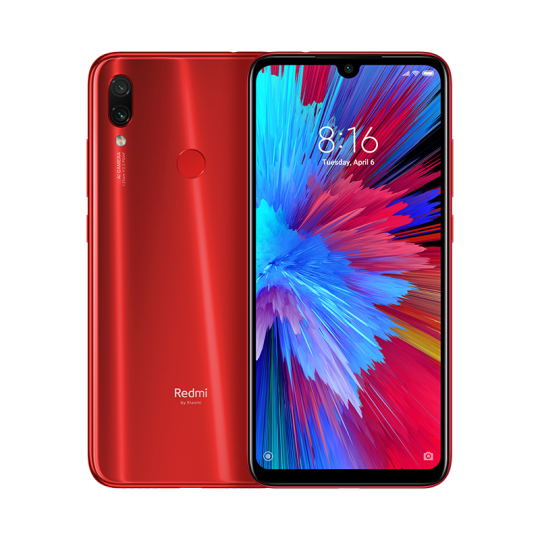
Yes, it is a successor of Xiaomi POCO F1. It flaunted the features of a flagship phone at an unbelievably low mid range price. The Indian e-commerce hub Flipkart, which was also the exclusive outlet for this phone, has promised that the Pocophone F2 to be launching in the first half of 2019. Lately, we have numerous leaks and rumors hinting at the upcoming K20 series to visit India under Poco very soon.2. MI A3The Mi A-series runs on pure stock software of Android One. After the Mi A1, and Mi A2, the upcoming Mi A3 could be the one worth waiting for-packed with latest technologies. It comes with a guaranteed 3 years of monthly security updates and 2 years of Android platform updates.
The Xiaomi Mi A3 mobile features a 6.3″ (16 cm) display with a screen resolution of 1080 x 2340 pixels and runs on Android v9.0 (Pie) operating system. Battery compiles to be 4000 mAh and a dual camera feature-48MP+2MP.3. Xiaomi foldable phoneXiaomi hinted at some ongoing work on foldable smart phones after their patent in China.Foldable phones is the next generation-playing a BIG role in the future of smart phones. Then why won’t Xiaomi also want a share of the pie, right? As the Xiaomi Foldable phone is folded, the icons and the software interface adapts to the new form factor. It is expected to be half the price of Samsung Galaxy Fold. It is said to be known as MI Fold. And for specifications and features, stay tuned with TechyMob.4. Redmi Pro 2Redmi Pro 2 has the design elements from the Redmi Note 7 Pro.
The glaring difference would be its notch-free 6.39-inches and with FHD+ resolution display. Redmi Pro 2 with in-display fingerprint scanner and Gorilla Glass 5 protection.It will feature the pop-up camera module to house the 20MP front camera. Redmi Pro 2 will be accompanying the 48MP sensor from the Note 7 Pro. The phone overall will be fueled by a 3,600 mAh battery that supports 27W fast charging.Mi Mix 4Just like the Mi 9, Mi Mix 4 would also sport a triple-rear camera. It is predicted that the Mi Mix 4 is going to have a periscope lens, which would facilitate greater optical zoom without compromising on the body’s thickness. It would be slim to all aspects. MI MIX 4 is likely to share the same Snapdragon 855 chipset.
Though the MI MIX 4 is expected to make no large changes in the particulars but, its launch is set way down the line. And we could gather more tidbits by then.6. Redmi 7 ProThe Redmi 7 Pro will launch in India within a few months. From the past MI inventions, we could make it out that this phone could sport a bigger battery, screen, storage, and better screen resolution. Xiaomi had been plagued by inevitable design and minor upgrades. However, this time, things could change and we keep our fingers crossed.7.
Redmi Note 7 series (launched)Redmi Note 7 and Redmi Note 7 Pro entered and flipped the Indian smart phone market completely absurd. The brand brought the phones in a classic design, powerful hardware, and mesmerizing camera all at a budget price bracket. While the Pro variant packs a 48MP main camera, SD675 chipset, and beefier memory/storage options, the base model bears a 12MP primary camera and SD660 SoC. The phones are among the best picks in their respective price tags.8. Redmi Y3Redmi Y3 is a selfie-oriented phone with a 32MP Super Selfie camera-making your memories revived forever. Rest of the phone stacks a cleverly list of specifications.
The rear cameras include a 12MP+2MP duo, a 6.26-inch Dot Notch IPS LCD display, a 4,000mAh battery, Android 9.0 Pie based MIUI 10 operating on top of a 14nm 1.8GHz Qualcomm Snapdragon 632 chipset.9. Redmi 7 (launched)The Redmi 7 features a 6.26-inch water drop notch display with HD+ resolution. Under the hood, it runs the Qualcomm Snapdragon 632 processor partnered with a 4000 mAh battery. Talking about the camera, a 12MP+2MP camera combination at the back and an 8MP sensor up front. It also features face unlock, a 3.5mm headphone jack, fingerprint sensor, and IR blaster too.10. Mi 9 (launched)Mi 9 is the Xiaomi flagship device with high-end specs such as a 5G equipped SD855 chipset coupled with 6GB RAM and 128GB onboard storage, a 3,500mAh power cell with 27W fast charging support, et

It features a 6.4-inch FHD + AMOLED display with a water drop notch packed with a 20MP Sony IMX576 sensor. The rear panel seats a 48Mp+ 16Mp+ 12Mp camera triplet.11. Xiaomi Blackshark 2 (launched)The gaming flagship Blackshark 2 comes with an Octa-core Snapdragon 855 SoC power packed with Adreno 640 GPU and 12GB of RAM. There is a separate variant 8GB RAM + 256GB storage and 6/8GB RAM with 128GB storage.The phone packs a hub of game-enhancing features, both hardware-wise as well as software-wise. It is fueled by a huge 4,000mAh battery that supports 27W fast charging.12. Redmi Go (launched)Redmi Go as the name suggests, is an Android Go phone. This simply means the phone runs on a custom-made trimmed down version of stock Android 8.1.
One can also download the lite versions of popular apps like Facebook Lite, Messenger Lite, Twitter Lite, Ola lite, Uber Lite, TikTok Lite, Mint (browser) Lite, etc from the Google Play store.You get a 5-inch HD display, an 8MP rear camera (with LED flash) and 5MP Auto-HDR enabled front camera, a 3000mAh battery and the power of 1.4GHz Qualcomm Snapdragon Quad-core 425 chipset coupled with Adreno 308 GPU.So, which of these are you excited for?People always expect value for money when it comes to the brand name Xiaomi. Their fans would be waiting for some exciting phones to come out this year.
We have listed some phones here with the rumored and leaked specs.Since Redmi is now a separate sub-brand, many of the affordable ones will surely ditch the Xiaomi. TechyMob will crawl the web for updates on the upcoming Xiaomi phones and will keep you posted. Till then, let us know in the comments about the Xiaomi phones you are most excited for.
Read More : http://www.techymob.com/top-upcoming-xiaomi-phones-to-look-out-in-2019/
0 notes
Photo

Samsung Galaxy M51 vs Xiaomi Mi Note 10 Lite vs Moto G 5G Plus: Specs Comparison Check Full Details 👇 https://tinyurl.com/y66a8kvv #yesmobile #latesttechnology #smartphone #latestmobile
0 notes
Text
This week in Android: MWC 2019 wrap up
MWC 2019 has come to a close, and it was one of the most exciting trade shows in recent memory. We got a ton of new and notable technology, and we gave out our awards accordingly. We put our hands on the Huawei Mate X, Huawei’s first foldable phone. Unlike the Samsung Galaxy Fold, the Mate X folds around the outside of the device. It’s a great design, though we can’t decide which is better. Naturally, Huawei is not impressed with Samsung’s efforts.
Beyond the Mate X, there was a tidal wave of phones coming out of MWC. We saw the Sony Xperia 1, the Nokia 9 Pureview, the LG G8, the LG V50, as well as a host of other connected devices. It was a 5G fest, and that’s just the news in Barcelona. Outside of Spain, we saw new hardware from Google, new hardware for Google Assistant, and a cool new device from HTC.
Here are your top stories from MWC 2019
2:15 – The best phones of MWC 2019
The awards are in! Here are our choices for favorite tech from MWC 2019 — phones and beyond.
4:10 – This smartphone has an 18,000mAh battery, looks dangerously heavy
You always said you’d take a thicker phone if it got you a bigger battery. Energizer is calling your bluff in a big way.
15:45 – Huawei Mate X first look: 5G flexibility in a foldable form factor
The Huawei Mate X brings a lot to the table — a foldable design, 5G, and monster specs — but it’s going to cost a lot as well.
30:45 – Nokia 9 PureView hands-on: Five cameras aim for mobile magic
Nokia’s next PureView camera is here, and this time it has five sensors. We’ve got all the specifications for you and we’ll even tell you where to pick one up.
37:15 – LG G8 ThinQ hands-on: Bland on the outside, blistering on the inside
The LG G8 is LG’s latest flagship is a little boring on the outside, but it’s packing some great internals that will keep you going all day.
LG V50 ThinQ hands-on: A safe bet on 5G
Meanwhile, LG announced its first 5G phone, the LG V50, and we’ve got all the details you need to know, including the future of LG’s 5G phones.
45:30 – Xiaomi announces Mi Mix 3 5G: Snapdragon 855, 5G connectivity for 599 euros
Meanwhile, Xiaomi announced its first 5G phone with a familiar look and a surprising price tag.
51:15 – Sony Xperia 1, 10, and 10 Plus hands-on: embracing the super tall display
Sony is taking things to the tallest extreme with a large forehead and a 21:9 aspect ratio, just like in the movies!
Here are your some other stories from MWC 2019 and beyond Barcelona
2:30 – Nubia just announced a phone-smartwatch hybrid with a flexible screen and it looks insane
Nubia has a new smartphone/smartwatch hybrid with a flexible screen and a camera module. It’s pretty sci-fi looking, but is it for you?
19:30 – HTC 5G Hub is an ultra-powerful Android smart display and a mobile Wi-Fi hotspot
Speaking of hybrids, HTC has a Google Home/tablet/hotspot hybrid device that will power your home network, or the rest of your devices on the go.
32:10 – Motorola RAZR foldable phone is still coming soon
We’re not done with foldable phones yet because Motorola confirmed that its foldable is coming soon.
39:55 – Physical Google Assistant buttons are coming to more phones along with new features
Google Assistant is getting a dedicated button on a lot more phones, and with that some added functionality.
47:40 – The Google Pixel 3 Lite and Pixel 3 XL Lite are probably coming soon
And of course, that’s not the only hardware we’ll be seeing sooner rather than later, we hope.
Meanwhile, here is a story we couldn’t cover on either podcast
Samsung Galaxy Fold is just for rich people, and Samsung knows it
Samsung seems to have a pretty good idea who will buy the Galaxy Fold, but we’re still trying to figure out who the Galaxy S10e is for.
Who wants to win a Samsung Galaxy S10?
This week, we’re giving away a brand new Samsung Galaxy S10. Enter this week’s Sunday giveaway for your chance to win!
Enter the giveaway here
Don’t miss these videos
youtube
youtube
youtube
youtube
Subscribe to Android Authority’s YouTube channel
That’s it, folks! We’ll have another giveaway and more top Android stories for you next week. To stay up to date on all things Android Authority in the meantime, be sure to subscribe to our newsletters at the link below.
Join our newsletters!
Join over 200,000 subscribers for the latest tech reviews, hot deals, and exciting giveaways. We guarantee 100% privacy. Your information will never be shared. Sign up now and get FREE access to our upcoming exclusive AA Insiders Club:
from Android Authority https://ift.tt/2Uj9dV0 via app promotion from Blogger https://ift.tt/2TrOSzz https://ift.tt/2EvAQ6u
0 notes
Text
Xiaomi Mi 10 Lite 5G review
Introduction
The least expensive 5G smartphone you can buy in Europe, the Mi 10 Lite 5G was launched at a base price of €350, showing that next-gen connectivity doesn’t have to require shelling out flagship money. We’re reviewing it a couple of months after the initial release and it can now even be found for a little less than that, keeping its title in the face of the just announced Moto G 5G Plus – Motorola’s most affordable point of entry into 5G.
So what is Xiaomi giving you for that price, other than high speed data transfers and improved latency, in a few lucky spots here and there? The 5G support comes courtesy of a potent Snapdragon 765G chipset, but the base version comes with just 64GB of storage and with no microSD slot that could be limiting (the 6 gigs of RAM should be just fine). The camera setup is nothing fancy, a 48MP main unit joined by a basic 8MP ultra wide and a couple of 2MP cams for close ups and depth detection.
The display leaves a little to be desired on paper too – it’s a large FullHD+ OLED with HDR10+ capability, which is all great, but there’s no high refresh rate. The battery capacity could potentially raise an eyebrow, the lowest of the current crop of 5G midrangers, though the 4,160mAh number would have sounded a lot just a year ago. The 20W charging support is also hardly impressive.
But Xiaomi has put together a very well balanced specsheet within a seemingly impossible budget and you can’t have everything at the Mi 10 Lite 5G’s price point. Here’s a rundown of the specs, before we move on to examining how they translate into real-world performance.
Xiaomi Mi 10 Lite 5G specs
Body: 163.7×74.8×7.9mm, 192g; Gorilla Glass 5 front and back, plastic frame. Colors: Aurora Blue, Cosmic Gray, Dream White.
Display: 6.57″ AMOLED, 1080x2400px resolution, 20:9 aspect ratio, 401ppi; HDR10+.
Chipset: Qualcomm SDM765 Snapdragon 765G (7 nm): Octa-core (1×2.4 GHz Kryo 475 Prime & 1×2.2 GHz Kryo 475 Gold & 6×1.8 GHz Kryo 475 Silver); Adreno 620.
Memory: 64GB 6GB RAM, 128GB 6GB RAM, 256GB 8GB RAM.
OS/Software: Android 10, MIUI 11.
Rear camera: Wide (main): 48 MP, f/1.8, 26mm, 1/2.0″, 0.8µm, PDAF; Ultra wide angle: 8 MP, f/2.2, 15mm, 120˚, 1/4.0″, 1.12µm; Macro: 2 MP, f/2.4; Depth: 2 MP, f/2.4; Dual-LED flash, HDR, panorama.
Front camera: 16 MP, f/2.5, (wide), 1/3.06″, 1.0µm; HDR, panorama.
Video capture: Rear camera: 4K@30/60fps, 1080p@30/60/120/240/960fps, gyro-EIS; Front camera: 1080p@30fps, 720p@120fps.
Battery: 4160mAh; Fast charging 20W, USB Power Delivery 3.0, Quick Charge 4+.
Misc: Fingerprint (under display, optical), accelerometer, gyro, proximity, compass; NFC.
Xiaomi Mi 10 Lite 5G unboxing
The Mi 10 Lite 5G comes in a black cardboard box like all them other Mi 10s and Mi 10 Notes. Inside, you’ll get a fairly typical Xiaomi bundle – adapter, cable and a case, no headphones.
The adapter is rated at up to 22.5W, though the phone is specified to support 20W charging – more on charging speed in the battery section. It’s got a USB-A port so the cable is a matching A-to-C type. The case is a soft silicone one, transparent too.
Source link
قالب وردپرس
from World Wide News https://ift.tt/3h2V9tY
0 notes
Text
Xiaomi Mi 10 Youth Edition full specs and renders leak through TENAA listing
After launching the Mi 10 and Mi 10 Pro flagship 5G smartphones, Xiaomi is now gearing up to launch a new variant in the lineup in China, dubbed as Mi 10 Lite aka Mi 10 Youth Edition on 27th April. Now, ahead of the launch, the smartphone has been listed on TENAA, revealing its full […]
The post Xiaomi Mi 10 Youth Edition full specs and renders leak through TENAA listing appeared first on MobiGyaan.
Xiaomi Mi 10 Youth Edition full specs and renders leak through TENAA listing published first on https://phonetracking.tumblr.com/ Xiaomi Mi 10 Youth Edition full specs and renders leak through TENAA listing published first on https://leolarsonblog.tumblr.com/
0 notes
Text
Mi 10 Lite vs Mi 10 Lite Zoom Edition: What’s the Difference?
try { window._mNHandle.queue.push(function (){ window._mNDetails.loadTag("173377332", "300x250", "173377332"); }); } catch (error) {}
Mi 10 Lite made its debut final month as the most inexpensive 5G smartphone from Xiaomi. It boasts of a quad rear digital camera setup and octa-core processor, together with another spectacular specs. And, on Monday, Xiaomi launched the new Mi 10 Lite Zoom Version that additionally comes with a quad rear digital camera setup and the similar octa-core processor with 5G assist. Whereas there are a number of similarities between the two telephones, let’s put them collectively and see what units them aside.
Mi 10 Lite vs Mi 10 Lite Zoom Version: Worth
The Xiaomi Mi 10 Lite begins from EUR 349 (roughly Rs. 29,200) and whereas the firm has not shared the RAM and storage configurations, the telephone is alleged to be coming with 6GB RAM and 64GB or 128GB of storage, in response to a report by HDBlog. The Mi 10 Lite will likely be accessible in the European market from Might. It is going to be supplied in 4 color choices. As of now, the firm has not revealed any details about the telephone coming to the Indian market.
The Xiaomi Mi 10 Lite Zoom Version is available in 4 configurations. The 6GB + 64GB mannequin is priced at CNY 2,099 (roughly Rs. 22,500), the 6GB + 128GB mannequin is priced at CNY 2,299 (roughly Rs. 24,700), 8GB + 128GB variant prices CNY 2,499 (roughly Rs. 26,900), and the 8GB + 256GB choice prices CNY 2,799 (roughly Rs. 30,100). It is going to be accessible in Berry Blue, Licorice Black, Peppermint Inexperienced, Peach Pink, and Tangy Orange color choices. The Mi 10 Lite Zoom Version will go on sale in mainland China via Xiaomi official channels.
Mi 10 Lite vs Mi 10 Lite Zoom Version: Specs
The Mi 10 Lite is alleged to run on MIUI 11, primarily based on Android. The Mi 10 Lite Zoom Version additionally runs on MIUI 11, primarily based on Android 10. The Mi 10 Lite and Mi 10 Lite Zoom Version, each telephones encompasses a 6.57-inch full-HD+ (1,080×2,400 pixels) AMOLED TrueColor show with 20:9 side ratio. Whereas each the telephones are powered by the octa-core Qualcomm Snapdragon 765G SoC, the Mi 10 Lite is alleged to characteristic 6GB of LPDDR4X RAM and the Mi 10 Lite Zoom Version will include as much as 8GB LPDDR4X RAM.
Images and videography are taken care of by the 4 cameras on the again of each telephones. The Mi 10 Lite is alleged to deal with a 48-megapixel major shooter, an 8-megapixel shooter with a wide-angle lens, a 2-megapixel macro shooter, and a 2-megapixel depth sensor. For selfies, there’s a 16-megapixel digital camera, housed in the waterdrop-style notch. In distinction, the Mi 10 Lite Zoom Version’s digital camera setup features a 48-megapixel major shooter, an 8-megapixel shooter with an ultra-wide-angle lens, an 8-megapixel telephoto digital camera with 50x digital zoom, and at last a 2-megapixel macro digital camera. On the entrance is a 16-megapixel digital camera in the similar waterdrop notch as the Mi 10 Lite.
Each the Mi 10 Lite and the Mi 10 Lite Zoom Version have 4,160mAh battery with assist for as much as 20W quick charging. For connectivity, each telephones have 5G assist, Wi-Fi, Bluetooth v5.1, and GPS. The Mi 10 Lite has a 3.5mm headphone jack as effectively. Each telephones even have in-display fingerprint sensors. By way of dimensions, each Mi 10 Lite and Mi 10 Lite Zoom version measure 163.1×74.7×7.988mm and weigh 192 grams.
Mi 10 Lite Zoom Version vs Xiaomi Mi 10 Lite comparability
GENERAL Model Xiaomi Xiaomi Mannequin Mi 10 Lite Zoom Version Mi 10 Lite Launch date 27th April 2020 27th March 2020 Launched in India No No Dimensions (mm) 164.02 x 74.77 x 7.88 – Weight (g) 192.00 – Battery capability (mAh) 4160 4160 Quick charging Proprietary Fast Cost 3.0 Colors Black Ability Storm, Blueberry Mint, Peach Grapefruit, 4 Seasons Spring Milk Inexperienced, White Peach Oolong – DISPLAY Display screen measurement (inches) 6.57 6.57 Decision 1080×2400 pixels – Safety kind Gorilla Glass – HARDWARE Processor 2.4GHz octa-core (1×2.4GHz + 1×2.2GHz + 6×1.8GHz) octa-core Processor make Qualcomm Snapdragon 765G Qualcomm Snapdragon 765G RAM 6GB – Inner storage 64GB – CAMERA Rear digital camera 48-megapixel (f/1.79) + 8-megapixel + 2-megapixel 48-megapixel Rear autofocus Sure Sure Rear flash Sure Sure Rear third digital camera attr (f/8, 2.2-micron) – Entrance digital camera 16-megapixel 16-megapixel SOFTWARE Working system Android 10 Android Pores and skin MIUI 11 – CONNECTIVITY Wi-Fi requirements supported 802.11 a/b/g/n – Bluetooth Sure, v 5.10 Sure NFC Sure – USB Kind-C Sure Sure Variety of SIMs 2 2 Wi-Fi Direct Sure – SIM 1 SIM Kind Nano-SIM Nano-SIM 4G/ LTE Sure Sure SIM 2 4G/ LTE Sure Sure SENSORS Face unlock Sure Sure In-Show Fingerprint Sensor Sure Sure Compass/ Magnetometer Sure Sure Proximity sensor Sure Sure Accelerometer Sure Sure Ambient mild sensor Sure Sure Gyroscope Sure –
try { window._mNHandle.queue.push(function (){ window._mNDetails.loadTag("379748484", "160x600", "379748484"); }); } catch (error) {}
Source link
The post Mi 10 Lite vs Mi 10 Lite Zoom Edition: What’s the Difference? appeared first on Bharats Guide.
from WordPress https://ift.tt/2W8emS7 via IFTTT
0 notes